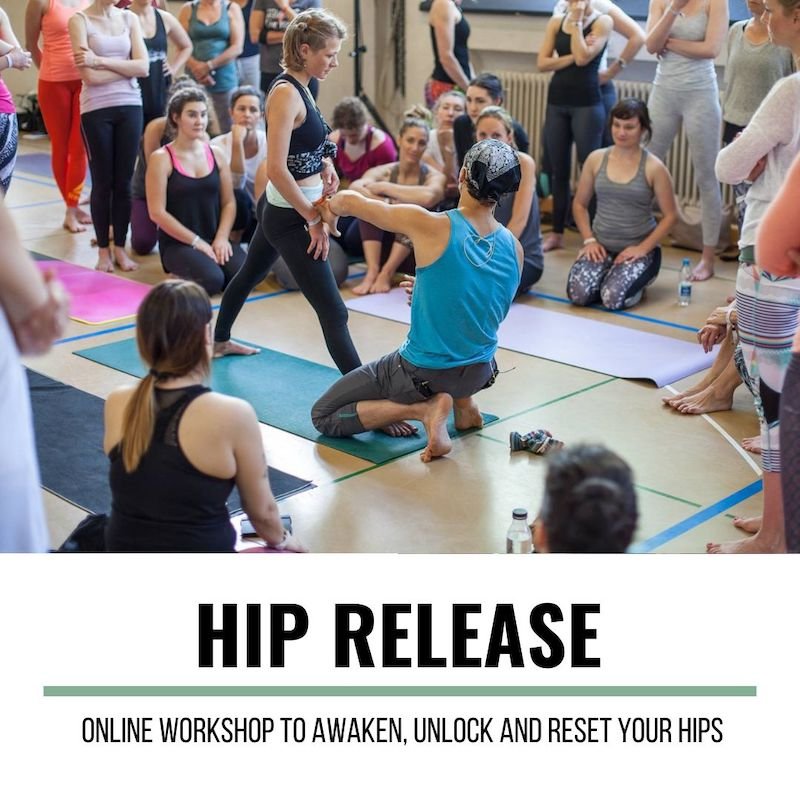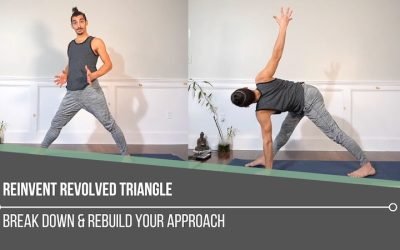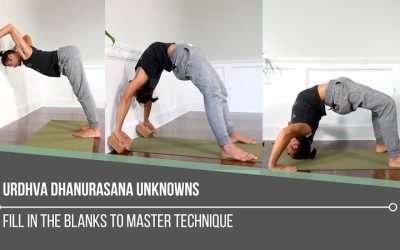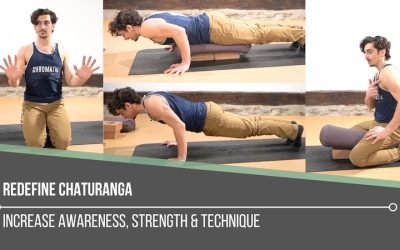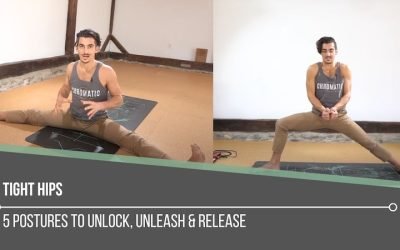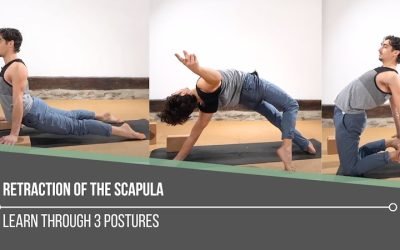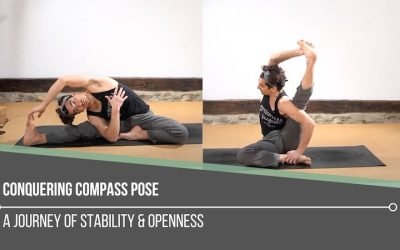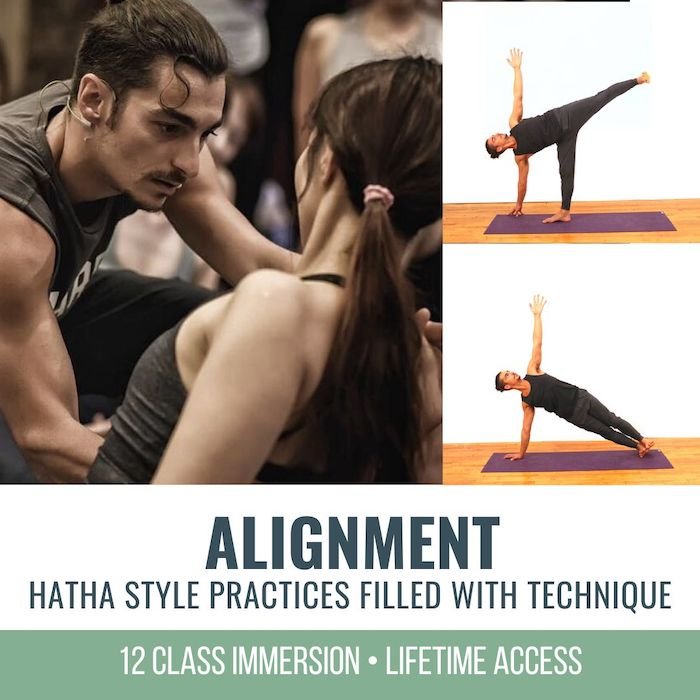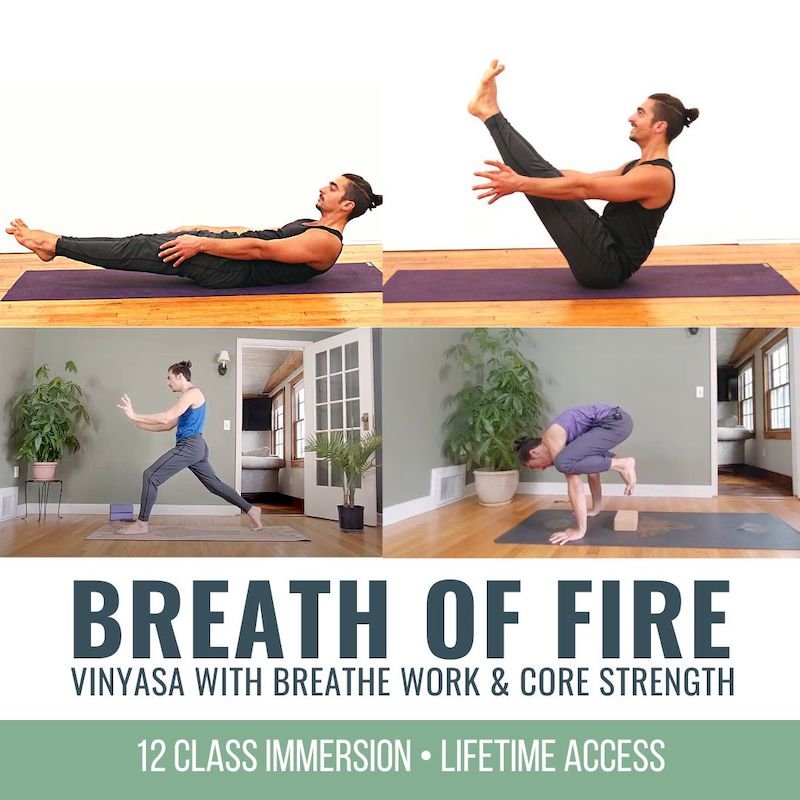Reinvent Revolved TriangleTRIKONASANAREINVENT REVOLVED TRIANGLE “Now twist!” Sounds easy enough—until we realize the complexity hidden within the cue. Revolved Triangle is far more than just a twist. It’s a balance challenge, a hamstring and IT band stretch, a spinal...
Lotus Foundations
Lotus Foundations
padmasana
LOTUS FOUNDATIONS
Lotus Pose requires a healthy amount of hip flexibility. For some, it comes easy. Reasons for this might be that the person is hypermobile in the hips, knees, and ankles and/or that many months or years of effort have been put towards developing the capability in their bodies.
If we push our limits to get into Lotus before our bodies are prepared, we can cause injuries that might have been prevented had we properly warmed up for such a deep posture. Implementing a “take a step back” mentality is key in moving our potential forward in the accessibility of Lotus.
Warming up doesn’t mean going straight into stretching and lengthening as much as possible. What we’ll see Matt demonstrate today is the importance of strengthening and contracting the muscles first.
HIP RELEASE
2-HOUR LIVESTREAM WORKSHOP!
- Technique-infused 2-hour workshop
- Nondogmatic alignment awareness
- Inner thigh & outer hip flexibility
- Increase active range of motion of the hips and pelvic movements
- Learn anatomy of the hips as you practice
- Strengthen the muscles for optimal balance
- Postural focus: Flying Pigeon and Lotus Pose
- Injury awareness: Avoiding knee & low-back strain/pain/compression
- Use anatomy knowledge to debunk popular alignment
- Skillfully guided sequence by the founder of Chromatic Yoga, Matt Giordano
- LIVESTREAM DATE: March 30th at 10am Eastern Time (NYC Timezone)
- REPLAY: Available immediately, lifetime access
STRENGTHEN THE EXTERNAL ROTATORS
Homing in on the foundations is the “step back”; it’s like pulling an elastic band as far back as we can before we let it go. The farther back we pull, the further forward it will fly.
In the video, Matt demonstrates two variations of Baddha Konasana to get us started.
Variation I
This will activate the external rotators of the hip. Getting into the posture requires widening the knees and bringing the soles of the feet together. Pressing the feet down while lifting the hips initiates the engagement of the external rotators so that we can access maximum external rotation of the hips.
Variation II
This time, we internally rotate the legs and take the feet wider than the knees to do the lift. These actions will support the engagement of the tensor fasciae latae (TFL, an internal rotator) but will also continue to activate the external rotators.
WATCH THE VIDEO
LOTUS FOUNDATIONS: HOW TO MAXIMIZE HIP FLEXIBILITY
TARGET THE HIP FLEXORS
Targeting the muscles of the full circumference of the hips is essential when preparing for Lotus. Matt demonstrates 2 effective drills/postures to target the hip flexors.
Scissor Legs
Scissoring the legs will help us connect with the sensation of activating the hip flexors, but it’s the pulsing of the legs that builds more heat and stimulation of the muscles.
Happy Baby Pose Without Hands
Once again, we are in deep hip flexion, but it’s about more than just drawing the legs in close. Being intentional about actively pulling the feet in, as if we were holding them with our hands, while pushing the knees out is what produces the activation of the adductor muscles.
200 HOUR ONLINE TEACHER TRAINING
GET CERTIFIED & DEEPEN YOUR YOGA PRACTICE
- Deepen your yoga practice
- Build confidence speaking in front of groups in person and online
- Learn foundational class structures and templates
- Learn techniques for a wide range of yoga postures
- Get certified and highly qualified to teach yoga
- Yoga Alliance Globally Recognized Certification Program
ISOMETRIC ENGAGEMENTS
One notable benefit of isometric exercises is that they help to recruit many muscle fibers at once. “Most muscle strengthening exercises involve moving the joints, using the muscles to push or pull against resistance. However, isometric exercises involve holding static positions for long periods of time.”
Kandola, Aaron. 5 Isometric Exercises For People To Try. Medical News Today, June 26, 2023
This form of muscle contraction is commonplace in Matt’s classes. In the video, he teaches us how to effectively use this type of engagement in the following postures when preparing for Lotus:
Crescent Pose Preparation
The action of drawing both feet towards one another and pressing down through the front heel will assist in activating the glutes and hamstrings of the front leg, while activating the hip flexors of the back leg.
Humble Warrior
Pressing the sole of the back foot down and dragging it forward while pressing down through the heel of the front foot will assist in activating the back adductors and gluteus muscles.
Pigeon Pose
Pulling the two knees towards one another isometrically in the stretched position will help to activate the glute and hamstring muscles of the front leg and hip flexors and adductors of the back leg.
300 HOUR ONLINE TEACHER TRAINING
GET 500 HOUR CERTIFIED AS A MASTER TEACHER
Master your skill set as a teacher through refined techniques, anatomy, biomechanics, sequencing, philosophy, meditation techniques, theming, yoga business, and much more!
- Get 500 hour certified
- Learn anatomy, biomechanics, asana techniques
- Expand your teaching skills
- Masterful sequencing and verbal delivery
- Learn meditation and breathwork techniques
- Transformative tools: theming, dharma talks, satsang
AWAKEN THE OUTER HIP MUSCLES
Finally, we look at the outer hip muscles. In a Forward Fold position, we push the back of the legs outwards. This will ignite the gluteus medius and minimus. We can layer on TFL activation by lifting each leg and pulling it forward to tap the back of each respective wrist.
Today’s postures may be part of a typical physical practice, but when we “dial back” and implement the actions that will strengthen and arouse the activation of the hip muscles, we can be more confident in moving towards greater flexibility and mobility to safely experiment with Lotus pose.
Matt’s upcoming workshop Hip Release will guide you towards a better understanding of how to maximize flexibility, strength, and mobility of the hips.
Register here to optimize your potential.
See you on the mat!
The 200 Hr. Teacher Training: Click Here to See the Next Start Date
The 300 Hr. Advanced Teacher Training: Click Here to See the Next Start Date
Article by Trish Curling
Videos Extracted From: Lotus Immersion
ONLINE ANATOMY COURSE
- Accessible, exciting, and easy to learn
- Anatomy and biomechanics for yoga
- Appropriate for both teachers and students
- Learn joint alignment vs pose alignment
- Demystify yoga poses and transitions
- Release aches and pains
- Learn how to avoid common injuries
- Caters to all levels with modifications and props
- 20 hours Continued Education Credits with Yoga Alliance
- 20 hours toward Chromatic Yoga Certification and 300 Hour
- Lifetime access
Continue Learning
Reinvent Revolved Triangle
Urdhva Dhanurasana Unknowns
Urdhva Dhanurasana UnknownsALIGNMENTURDHVA DHANURASANA UNKNOWNS Let’s take a pause from what we think we know about Wheel Pose and consider the Urdhva Dhanurasana unknowns. Often, we hear the cue, “Just press up into Wheel,” and we do—without questioning the subtle...
Redefine Chaturanga
Redefine ChaturangaALIGNMENTREDEFINE CHATURANGA To redefine Chaturanga, we first have to be willing to challenge what we think we already know. Many of us were taught a narrow-hand, elbows-tight variation of the pose—elbows hugging the ribs, hands close beneath the...
Tight Hips
Tight HipsHIP MOBILITYTIGHT HIPS When working to release tight hips, most people instinctively go straight for deep stretches. But one often overlooked area that holds a surprising amount of tension is the adductorS (the inner thigh muscles) that connect to the...
Retraction Of The Scapula
Retraction Of The ScapulaSHOULDER ACTIONSRETRACTION OF THE SCAPULA It may appear that scapular retraction holds less weight in finding deeper backbends, but this action can be quite significant in what we experience when it comes to strength, stability, and...
Conquering Compass Pose
Conquering Compass PoseSURYA YANTRASANACONQUERING COMPASS POSE Conquering Compass Pose isn’t about forcing your leg behind your shoulder—it’s about understanding and participating in the muscular coordination that makes the posture possible. The real power comes from...
THE FREE TECHNIQUE PACK
When You Subscribe, You Will Get Instant Access to
- the Technique Pack: 15 yoga pose breakdowns
- exclusive online course discounts
- exclusive blogs and videos

